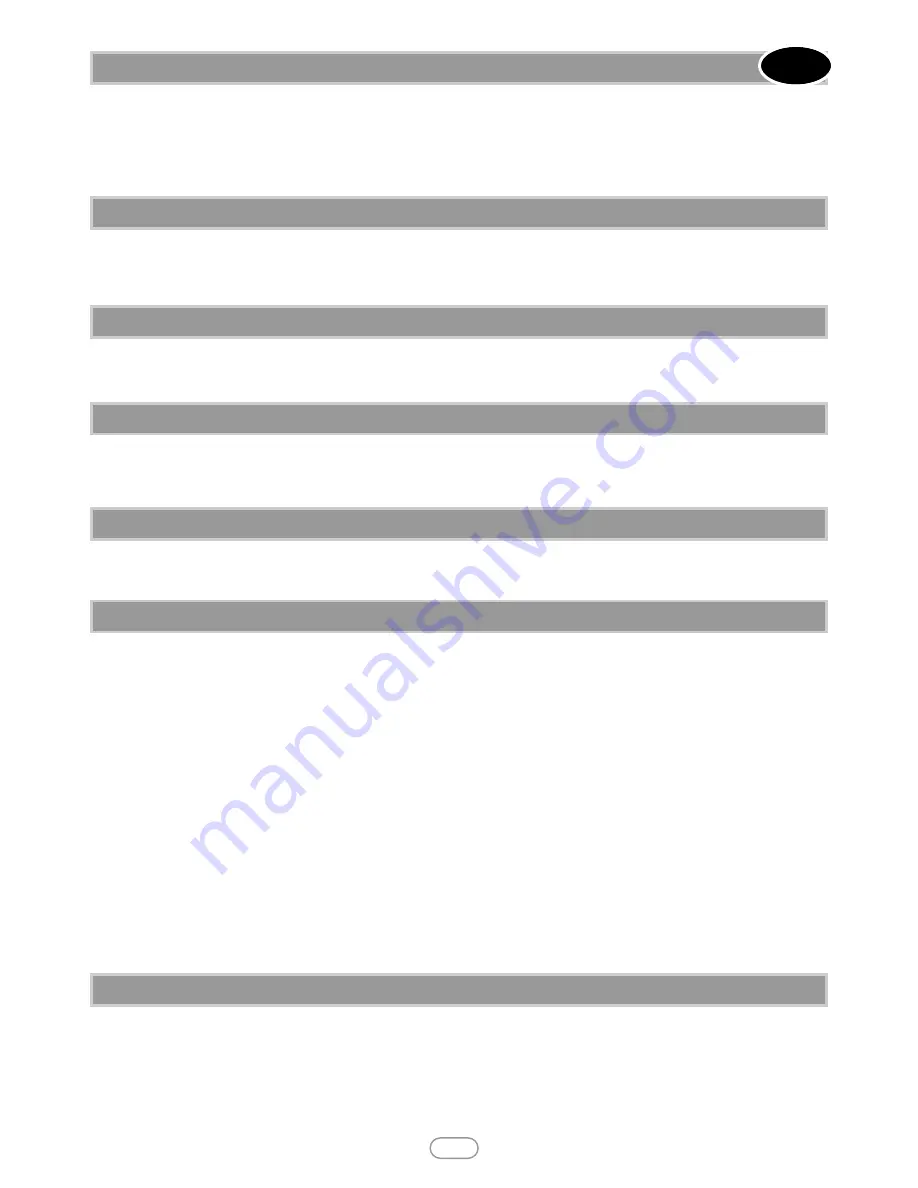
When using the freezer for the first time or after defrosting, turn the thermostat temperature control to setting 6 for at least two hours
before introducing the food to be stored, then adjust to your preferred setting.
All frozen food products you purchase should be placed in the freezer as soon as possible to avoid the frozen food from defrosting.
Storage recommendations printed on the packaging of frozen food by the manufactures should always be followed.
9.0 STORAGE OF FROZEN FOOD
10.0 FREEZING FRESH FOOD
Ensure that your freezing operations are carried out under the most hygienic conditions, as freezing alone does not sterilise the food. Never
put hot or even warm foodstuffs into the freezer. Prior to storing the food, pack it in plastic bags, aluminium foil or freezer containers and
place into the freezer without putting them in contact with food that has already been frozen.
11.0 MAKING ICE CUBES
Pour water into the ice cube tray until it is two thirds full and place into the freezer.
Ice cubes will form in approximately 2 to 3 hours. The ice cube can be easily removed by twisting the ice cube tray or running under cold
water for a short time.
12.0 REFRIGERATOR DEFROST PROCESS
The refrigerator defrosting process is carried out automatically every time the compressor stops.
The defrost water drains from the cabinet into a tray placed on the top of the compressor to the rear of the unit where it evaporates.
13.0 DEFROSTING YOUR FREEZER
14.0 CLEANING AND MAINTENANCE
Small amounts of frost will accumulate inside the freezer depending upon the length of time during which the door is left open or the
amount of moisture introduced. It is essential to ensure that no frost or ice is allowed to form at places where it will affect the close fitting
of the door seal. This might allow air to penetrate the cabinet, thus encouraging continuous running of the compressor. Thin frost formation is
quite soft and can be removed with a brush or plastic scraper. Do not use metal or sharp scrapers, mechanical devices or other means to
accelerate the defrosting process. Remove all dislodged frost from the cabinet floor. For the removal of thin frost it is not necessary to switch
off the appliance.
For the removal of heavy ice deposits disconnect the appliance from the mains supply and empty the contents and try and keep them cold.
Defrosting will be most effective if carried out when the freezer is nearly empty, and it should be carried out as quickly as possible to prevent
undue increase in temperature of the contents.
Do not use metal or sharp scrapers, mechanical devices or other means to accelerate the defrosting process. An increase in temperature of
frozen food packages during defrosting will shorten the storage life. Provided that the contents are well wrapped and placed in a cool area
they should keep for several hours. Examine the contents when replacing them in the freezer and if some of the packages have thawed out it
should be eaten within 24 hours or be cooked and re-frozen.
After defrosting has finished clean the inside with a solution of warm water with a little bicarbonate of soda and then dry thoroughly. Wash
all removable parts in the same way and reassemble. Reconnect the appliance to the mains supply and leave for 2 to 3 hours on setting num-
ber 6 before introducing the food back into the freezer.
WARNING! THE REFRIGERATING SYSTEM MUST NOT BE DAMAGED AT ANY TIME!
Before any cleaning or maintenance is carried out you must disconnect the appliance from the mains supply by removing the plug, never
remove the plug by pulling on the mains cord. Remove the plug by pulling on the plug itself.
It is recommended that when cleaning the appliance, both the inside and outside, can be cleaned using warm water and a little bicarbonate of
soda. Use 1 teaspoon to 1.2 litres of water.
If the appliance is not to be used for a long period of time then it is recommended to remove all the food stuff, clean the inside of the appli-
ance and leave the door open to allow the air to circulate thus avoiding unpleasant odours.
8.0 STORAGE OF FRESH FOOD IN THE REFRIGERATOR
Food should always be covered tightly with foil, plastic film, placed in bags or stored in airtight containers. This will prevent food from dehy-
drating and prevent the strong smell of some foods.
To store raw meat wrap in polythene bags or airtight containers and place on the lowest shelf.
Do not allow raw meat to come into contact with cooked foods. For safety, only store raw meat for two or three days. Fruit and vegetables
should be thoroughly cleaned and placed in the vegetable / salad bin.
Milk and other liquids should be sealed with lids and placed in the bottle shelf on the door.
GB IE
4
©
2014 Focal Point Fires plc.























